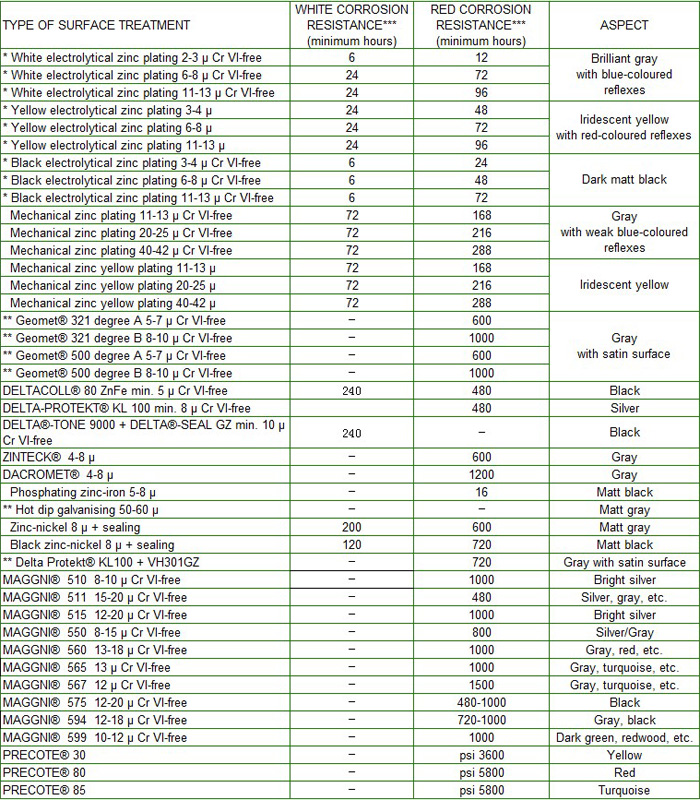Surface treatment is a broad range of industrial processes that alter the surface of a manufactured item to achieve a certain property. The processes may be employed to improve appearance, corrosion resistance, tarnish resistance, chemical resistance, wear resistance, hardness, modify electrical conductivity, control the surface friction, etc.
Surface treatment processes can be categorized by how they affect the work piece.
● Surface protecting, such as Plating (zinc, copper, nickel, chrome, tin, cadmium, etc.), Coating (powder coating, painting, etc.), Chemical treating (black oxide, phosphating, etc.)
● Surface optimizing, such as Physical vapor deposition (PVD), Chemical vapor deposition (CVD), Plasma chemical vapor deposition (PCVD).

* Dehydrogenation. During the electrolytical galvanization, the pieces absorb hydrogen, consequently cracking the material. In order to get rid of this embrittlement, Technical carries out a dehydrogenation treatment on all the items manufactured with spring steel. Such treatment is duly made within two hours after the zinc covering, before the chromic conversion. Furthermore this treatment guarantees a permanence of at least nine hours by a temperature of 190-200 degrees.
** Treatment not recommended for products with internal diameter inferior to 7 mm. The pieces of small dimensions usually use to stick fast together.
*** Salt spray test according to ISO 9227 standard.